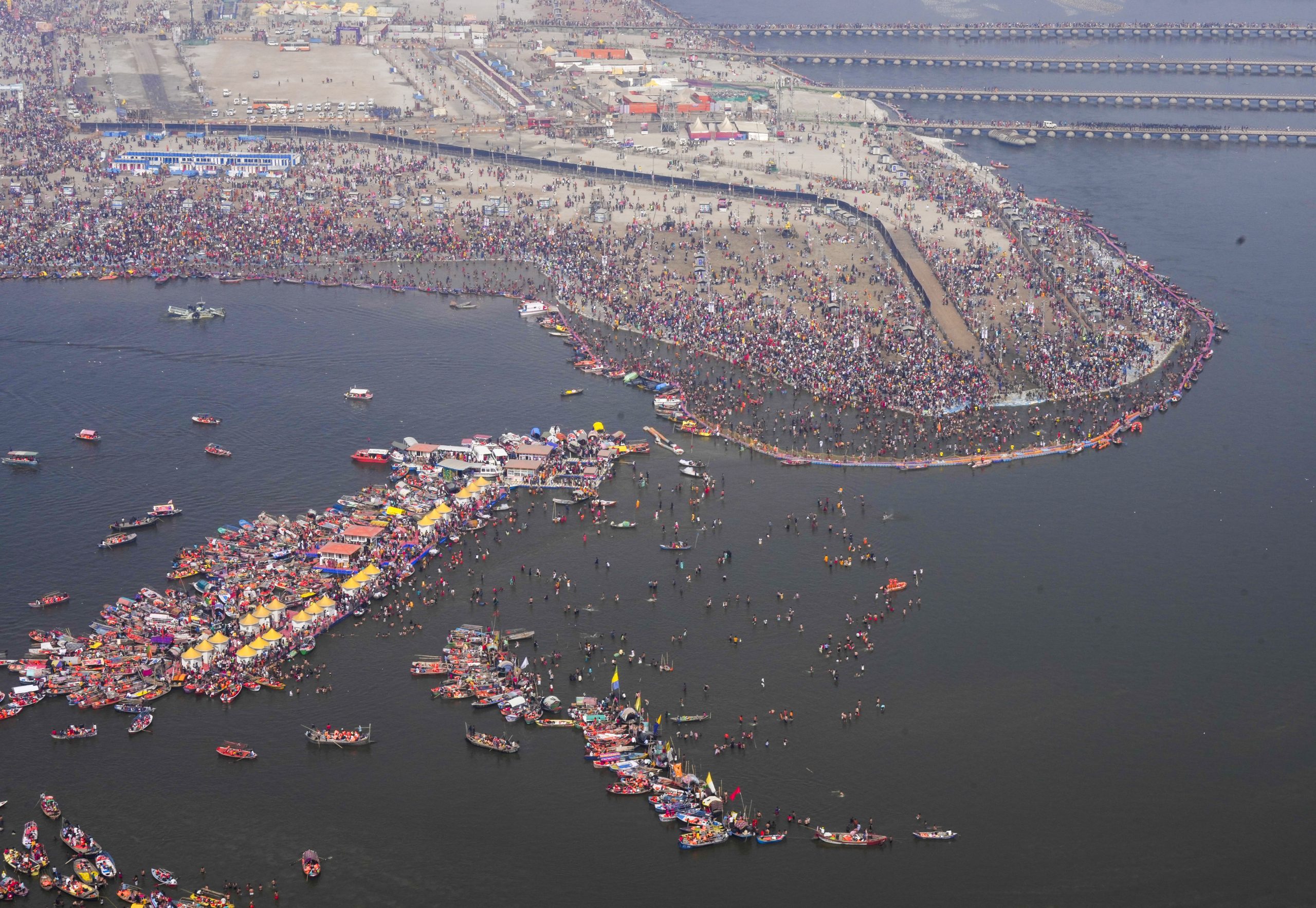Mahakumbh Nagar, Feb 2: With the final Amrit Snan set for Monday on Basant Panchami, officials are emphasizing adherence to Chief Minister Yogi Adityanath’s call for “zero error.”
This focus on ‘zero error’ is particularly crucial following a tragic stampede that resulted in at least 30 fatalities during the previous snan on January 29, injuring around 60 others.
The Uttar Pradesh government has appointed two senior IAS officers, who previously facilitated the successful 2019 Ardh Kumbh, to ensure the Mela runs smoothly.
Ashish Goyal and Bhanu Chandra Goswami, both with significant experience in Prayagraj’s administrative framework and crowd management from the 2019 event, are collaborating with Mela Adhikari Vijay Kiran Anand as a experienced triad.
Additional Director General of Police Bhanu Bhaskar is actively overseeing crowd control measures in the Mela area.
Following the deadly crowd crush at Sangam Nose during Mauni Amavasya (January 29), Chief Minister Adityanath made his first visit to Prayagraj post-incident on Saturday.
During his visit, he surveyed the incident site and visited hospitals to assess the injured. In a meeting reviewing preparations for the Basant Panchami snan, he reiterated the need for flawless execution.
On Sunday morning, ADG Bhaskar monitored the entire fair area from the Integrated Command and Control Centre (ICCC) located in the Mela Authority building, utilizing large screens to review intersections and entry points while issuing instructions through loudspeakers to manage the crowd.
Addressing devotees over the mic from the ICCC, he requested, “Please do not linger unnecessarily at the ghats after bathing; clear the area for others to take their dip. Avoid eating or drinking on the ghats and head to designated refreshment areas.” Bhaskar further instructed police to maintain order and ensure devotees leave promptly after their dips.
Devotee Rupam Chandra shared with PTI, “After our dip at Sangam ghat, we were ushered away. The police are blowing whistles in every direction to ensure the ghats are clear. This is why we left immediately after bathing.”
According to a Mela administration official, all police personnel have been directed to prioritize crowd control throughout the event. Administrative officers Bhanu Chandra Goswami and Ashish Goyal, who came from Lucknow, are assisting the Mela administration by sharing insights from their previous experiences.
In 2019, Goswami was the Vice Chairman of the Prayagraj Development Authority, while Goyal served as the Divisional Commissioner of Prayagraj.
The crowd for the Basant Panchami Snan is already significant, with nearly 90 lakh devotees having bathed in the Ganga and at the Sangam by noon on Sunday. Additionally, over 33.61 crore devotees have participated in the Maha Kumbh since January 13.
Mahant Ravindra Puri, President of the All India Akhada Parishad, appealed to devotees, noting that all five kos of Prayagraj are regarded as part of the Sangam. Thus, devotees gain the merit of the Maha Kumbh by bathing anywhere from Phaphamu to Arail.
He added, “Given the limited area of the Sangam, we urge all devotees to avoid unnecessary crowding in that space.” Prime Minister Narendra Modi is expected to visit Maha Kumbh Nagar on February 5, indicating that the upcoming days will be challenging for Mela administration and police forces.
The Mauni Amavasya dip resulted in a crowd crush at Sangam Nose, tragically claiming 30 lives and injuring 60 others. According to police, the stampede occurred when overcrowding led devotees to jostle for space, breaking through barriers.
The Amrit Snan represents the most significant and sacred ritual of the Maha Kumbh Mela, drawing millions of pilgrims to the banks of the Triveni Sangam. Participants believe that bathing during these celestial events cleanses sins and facilitates the path to ‘moksha’ or liberation.
A key highlight of the Amrit Snan is the grand procession of saints and ascetics, including the ash-smeared Nagas from the Akharas (monastic orders).
The dates for the Amrit Snan are determined based on astrological alignments of the Sun, Moon, and Jupiter, believed to enhance the spiritual power of the sacred rivers. In this Maha Kumbh, the first two Amrit Snan took place on January 14 (Makar Sankranti) and January 29 (Mauni Amavasya), with the next scheduled for February 3 (Basant Panchami).
According to the Hindu calendar, Basant Panchami occurs on Magh Shukla Panchami, marking the auspicious beginning of the spring season.
In addition to the Amrit Snan dates, there are three other significant bathing dates: January 13 (Paush Purnima), February 12 (Maghi Purnima), and February 26 (Mahashivratri), which will conclude the once-in-a-12-year event. (Agencies)


Leave a Reply